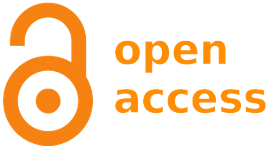Clinical and epidemiological aspects of patients injured by stingrays in the state of Pará, Brazil
Abstract
The objective of this study was to outline the clinical-epidemiological profile of patients injured by stingrays from 2007 to 2021. A descriptive study was carried out through an epidemiological retrospective of ichthyism in 20 municipalities in Pará belonging to the Amazon Basin. Notified cases were obtained from the Notifiable Diseases Information System, where the following variables were investigated: socioeconomic profile, affected anatomical region, local and systemic clinical symptomatology. Treatment evolution regarding death and cure was also evaluated. Data were statistically evaluated using the chi-square test, at 5% significance level. A total of 737 cases of accidents caused by stingrays were reported during the period. Of these, 438 forms were not completed with the education data of the patients treated, followed by 158 forms not completed for the race item. Accidents caused by stingrays tend to happen to brown men, aged over 20 years, with incomplete secondary education, living in urban areas, with accidents occurring mainly on the region's beaches. The foot and leg were the most affected regions (p<0.05). Patients sought care in the first hours after the accident or only 24 hours (p<0.05) later. They presented local symptoms, such as pain and swelling. Some cases had systemic complications, mainly myolytic and neurological. This study reinforces the need to adopt strategies related to health and environmental education for people who visit risky areas to mitigate the occurrence of accidents caused by stingrays.
Downloads
DECLARATION OF ORIGINALITY AND COPYRIGHTS
I Declare that current article is original and has not been submitted for publication, in part or in whole, to any other national or international journal.
The copyrights belong exclusively to the authors. Published content is licensed under Creative Commons Attribution 4.0 (CC BY 4.0) guidelines, which allows sharing (copy and distribution of the material in any medium or format) and adaptation (remix, transform, and build upon the material) for any purpose, even commercially, under the terms of attribution.
Read this link for further information on how to use CC BY 4.0 properly.























5.png)







